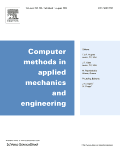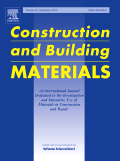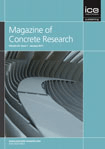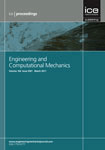
Frontiers of Structural and Civil Engineering
Scope & Guideline
Elevating Standards in Structural and Civil Engineering
Introduction
Aims and Scopes
- Advanced Material Engineering:
Research on new materials, including self-healing concrete, recycled aggregates, and fiber-reinforced composites, highlighting their mechanical properties and applications in construction. - Computational Modeling and Simulation:
Utilization of numerical methods, machine learning, and deep learning techniques for predicting structural behavior, optimizing designs, and assessing performance under various loading conditions. - Structural Health Monitoring and Damage Detection:
Development of innovative methods for real-time monitoring of structural integrity, including the use of acoustic emission, neural networks, and image processing techniques to identify damage. - Seismic and Dynamic Analysis:
Investigation of structural responses to seismic events, including the development of design methodologies and performance evaluation for various structural types under dynamic loads. - Sustainable Construction Practices:
Exploration of eco-friendly materials and construction techniques aimed at reducing the environmental impact of civil engineering projects, including the use of recycled materials. - Geotechnical Engineering and Soil-Structure Interaction:
Research on the interaction between structures and soil, including tunneling, slope stability, and foundation design, often incorporating field studies and numerical simulations.
Trending and Emerging
- Machine Learning and AI Applications:
A notable increase in research employing machine learning and artificial intelligence techniques for predictive modeling, damage detection, and optimization of structural designs. - Sustainable Materials and Practices:
Growing interest in eco-friendly materials and construction practices, including studies on recycled materials, self-healing concrete, and sustainable construction methodologies. - Smart Infrastructure and Monitoring Technologies:
Emerging research on smart infrastructure, including the use of sensors and IoT technologies for real-time monitoring and data analysis to enhance structural resilience and safety. - Multiscale and Multiphysics Modeling:
An upward trend in utilizing multiscale and multiphysics approaches to understand complex interactions in materials and structures, allowing for more comprehensive analyses. - Seismic Resilience and Disaster Preparedness:
Increasing emphasis on research aimed at improving the seismic resilience of structures, including innovative retrofitting techniques and performance-based design methodologies.
Declining or Waning
- Traditional Construction Techniques:
Research focused on conventional construction methods is becoming less prominent as innovative techniques and materials gain traction, reflecting a shift towards automation and advanced methodologies. - Basic Structural Analysis Methods:
Papers focused solely on traditional structural analysis methods without the integration of modern computational techniques or advanced materials are becoming less frequent, as researchers seek more sophisticated approaches. - Localized Studies without Broader Implications:
Works that concentrate on highly localized or specific case studies with limited applicability to broader engineering challenges are seeing a decline, as there is a growing emphasis on research with wider relevance and applicability.
Similar Journals

Civil Engineering Infrastructures Journal-CEIJ
Transforming infrastructure through collaborative knowledge sharing.Civil Engineering Infrastructures Journal (CEIJ), published by the University of Tehran, College of Engineering, is a premier platform dedicated to advancing the field of civil and structural engineering. With an ISSN of 2322-2093 and an E-ISSN of 2423-6691, CEIJ has been an Open Access journal since 2013, ensuring that critical research is accessible to a global audience. While it currently holds a Q4 category ranking in Civil and Structural Engineering as per the 2023 quartiles, the journal is committed to enhancing its reputation and impact within the academic community. Researchers, professionals, and students will find valuable insights in its compelling articles, which cover a wide array of topics pertinent to civil engineering infrastructures. The journal aims to foster innovative ideas and solutions that address contemporary challenges in the industry. As a publication rooted in Iran but reaching an international readership, CEIJ serves as a significant conduit for disseminating impactful research in the ever-evolving landscape of civil engineering.

Computers and Concrete
Shaping Tomorrow's Infrastructure with Cutting-Edge ResearchComputers and Concrete is a leading academic journal published by TECHNO-PRESS, focusing on the interdisciplinary field of computational mechanics as applied to civil engineering and concrete materials. With an impressive impact factor consistent with its status in its category, this journal holds a prestigious Q1 ranking in Computational Mechanics for 2023, being recognized as one of the top journals within this domain. Since its inception in 2006, Computers and Concrete has provided a vital platform for researchers and professionals to disseminate innovative findings, fostering collaboration and knowledge exchange among an engaged community. The journal is available in both print and digital formats, ensuring accessibility to a wide audience of academics and practitioners alike. By featuring high-quality research articles, review papers, and technical notes, this journal plays a crucial role in advancing the understanding and application of computational techniques in the field of concrete and structural engineering.

Journal of Structural Integrity and Maintenance
Transforming Challenges into Solutions in Structural MaintenanceThe Journal of Structural Integrity and Maintenance, published by Taylor & Francis Ltd, serves as a prestigious platform dedicated to the advancement of knowledge in the fields of structural integrity, civil engineering, and materials science. With an ISSN of 2470-5314 and an E-ISSN of 2470-5322, this journal is uniquely positioned to address the critical challenges faced by researchers and professionals in building and construction, mechanical engineering, and related domains. Since its inception in 2016, this journal has been consistently recognized for its quality, currently holding a Q2 rank across several disciplines, including Building and Construction and Civil and Structural Engineering in 2023. The journal aims to publish high-quality research that contributes to the understanding and maintenance of structural integrity, fostering innovations that promote safety, efficiency, and sustainability in engineering practices. Researchers and students alike are encouraged to engage with this rich repository of knowledge, which plays a vital role in shaping future advancements in structural engineering and materials science.

COMPUTER METHODS IN APPLIED MECHANICS AND ENGINEERING
Transforming Theoretical Insights into Practical Applications.COMPUTER METHODS IN APPLIED MECHANICS AND ENGINEERING, published by Elsevier Science SA, is a premier journal that has significantly contributed to the fields of computational mechanics, computer science applications, mechanical engineering, and the mechanics of materials since its inception in 1972. With an ISSN of 0045-7825 and an E-ISSN of 1879-2138, this journal is recognized for its rigorous peer-review process and is consistently ranked in the Q1 quartile across multiple categories, including Computational Mechanics and Mechanical Engineering. Its impressive Scopus rankings place it in the top tiers of its field, with a percentile ranking of 98th in Computational Mechanics. Researchers, professionals, and students will find the journal's comprehensive scope and high-quality articles invaluable for advancing their knowledge and practices at the intersection of engineering and computation. Although not an open-access journal, its impactful contributions to both theoretical and applied research make it an essential resource for anyone involved in these dynamic fields.

Construction and Building Materials
Driving excellence in building science.Construction and Building Materials, published by ELSEVIER SCI LTD, is a highly regarded journal in the fields of Construction and Building, Civil and Structural Engineering, and Materials Science. With an impressive Q1 ranking across multiple categories in 2023, the journal is recognized for its high-impact research, reflected in its Scopus rankings—13th out of 379 in Civil and Structural Engineering and 9th out of 223 in Building and Construction. Spanning from 1987 to 2024, it serves as a pivotal resource for researchers, professionals, and students aiming to explore advances in materials used in construction and their applications. However, it does not currently offer Open Access options. The journal stands as a vital platform for disseminating cutting-edge findings that can drive innovation and efficiency in the construction industry while addressing contemporary challenges, thus reinforcing its significance in shaping sustainable practices and technological advancements.

Electronic Journal of Structural Engineering
Connecting Global Minds in Structural Engineering InnovationThe Electronic Journal of Structural Engineering (ISSN: 1443-9255), published by EJSE INT LTD, serves as a vital platform for disseminating innovative research and developments in the field of structural engineering. Since its inception in 2001, the journal has evolved to embrace an Open Access model starting in 2022, ensuring that cutting-edge findings are freely accessible to researchers, professionals, and students worldwide. Housed within the reputable Department of Infrastructure Engineering at the University of Melbourne, Australia, the journal focuses on a wide range of topics related to civil and structural engineering, positioning itself within the Q4 category on the 2023 Scopus rankings. While its H-index and detailed scope data are currently unavailable, the journal's commitment to quality research is evident through its continuous publication and engagement with the global academic community. With significant implications for contemporary engineering practices, The Electronic Journal of Structural Engineering not only fosters scholarly discourse but also encourages practical applications of structural engineering advancements.

MAGAZINE OF CONCRETE RESEARCH
Building Bridges Between Research and Practice in ConcreteThe Magazine of Concrete Research, published by Emerald Group Publishing Ltd, is a pivotal journal in the fields of Building and Construction, Civil and Structural Engineering, and Materials Science, boasting an impressive track record since its inception in 1949. As of 2023, it holds a Q2 category ranking across its related disciplines, indicating its strong influence and credible contributions to the field with Scopus ranks placing it favorably among its peers. With an emphasis on advancing knowledge surrounding concrete technology and construction practices, this journal serves as a key resource for researchers, industry professionals, and students alike. Though not Open Access, the Magazine of Concrete Research continues to cut through the complexities of concrete-related innovations, inspiring advancements in both academic research and practical applications. Engage with the latest findings and technological developments in concrete research, ensuring you stay at the forefront of this essential field.

Magazine of Civil Engineering
Elevating Standards in Building and Construction ResearchMagazine of Civil Engineering, published by ST-PETERSBURG STATE POLYTECHNICAL UNIVERSITY, is a prominent open access journal dedicated to the field of civil and structural engineering. With an ISSN of 2712-8172 and E-ISSN 2071-0305, it serves as a vital platform for disseminating high-quality research, innovative methodologies, and current trends in building and construction. Since its inception in 2010, the journal has embraced open access, ensuring broad visibility and accessibility for its contributions to the academic community. The magazine holds a respectable position in the academic hierarchy, ranked in the Q3 quartile for both Building and Construction and Civil and Structural Engineering categories as of 2023. It is indexed in Scopus, amplifying its societal impact and reach with a rank of #114/223 in Building and Construction and #224/379 in Civil and Structural Engineering. Researchers, professionals, and students alike are encouraged to engage with the cutting-edge studies presented in the magazine, contributing to the advancement of knowledge and practice within the civil engineering domain.

Latin American Journal of Solids and Structures
Unlocking Knowledge in Materials and Structural ScienceLatin American Journal of Solids and Structures is a premier, open-access academic journal dedicated to advancing the field of solid mechanics and structural engineering. Established in 2003 and published by LATIN AMER J SOLIDS STRUCTURES, this journal provides a vital platform for innovative research and scholarly discourse, with a particular focus on applications within aerospace, automotive, civil, and mechanical engineering as well as ocean and materials science. Recognized for its rigorous peer-review process, it has proudly earned a Q2 ranking in Automotive Engineering and maintains a presence in several Q3 categories, highlighting its impact and relevance in a wide array of engineering disciplines. With a commitment to accessibility and knowledge dissemination, the journal encourages contributions from researchers, professionals, and students alike, fostering collaboration and advancement in the rapidly evolving field of structural engineering and materials science. Located in São Paulo, Brazil, it serves as a bridge between Latin American scholars and the global research community.

Proceedings of the Institution of Civil Engineers-Engineering and Computational Mechanics
Advancing the Frontiers of Civil Engineering and MechanicsProceedings of the Institution of Civil Engineers - Engineering and Computational Mechanics is a prestigious journal published by Emerald Group Publishing Ltd, dedicated to advancing the fields of civil and structural engineering, as well as mechanics of materials. With an ISSN of 1755-0777 and E-ISSN 1755-0785, this journal serves as a critical platform for disseminating innovative research and practical insights from 2009 through 2024. As part of its commitment to academic rigor, it is categorized in the Q4 quartile for both civil and structural engineering and mechanics of materials, reflecting a unique position in the scholarly community. The journal is essential for professionals, researchers, and students aiming to stay informed on current trends, methodologies, and applications in engineering and computational mechanics. By engaging with this publication, readers gain access to crucial findings that contribute to the advancement of infrastructure and materials science, vital for developing resilient and sustainable engineering solutions.